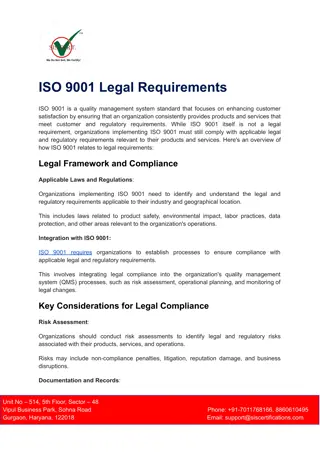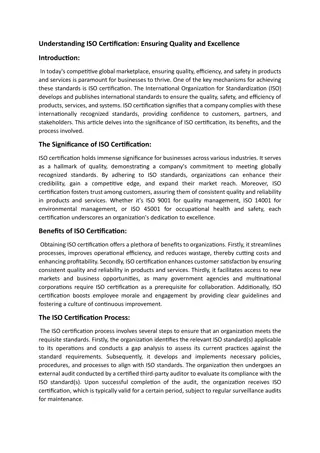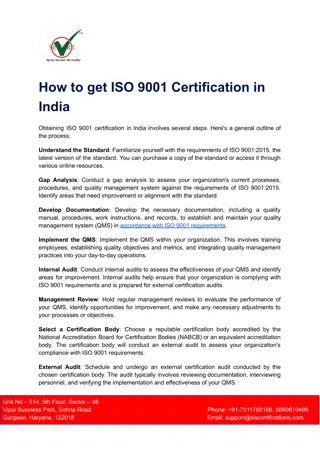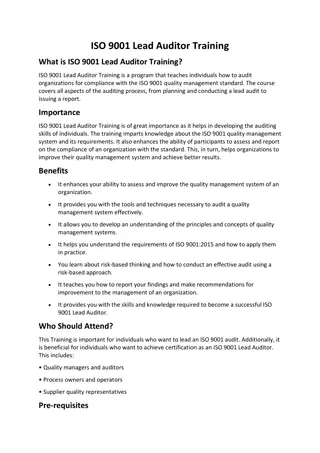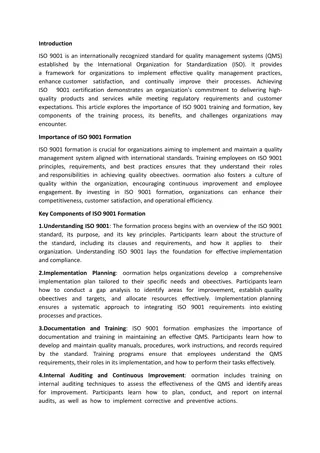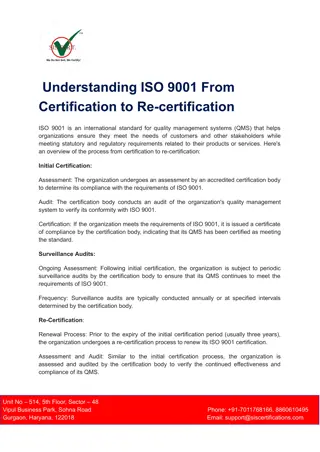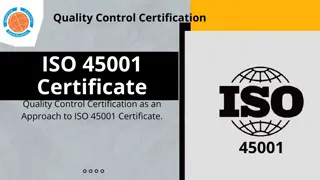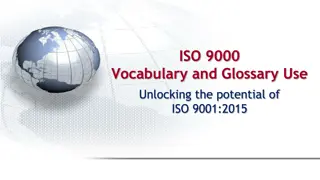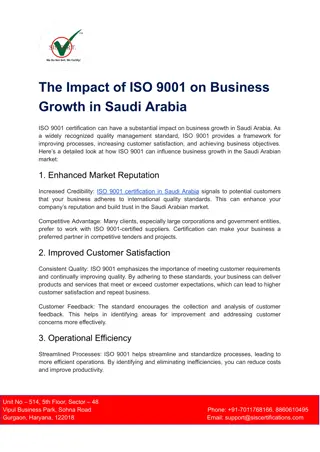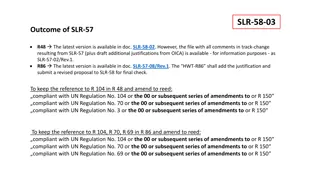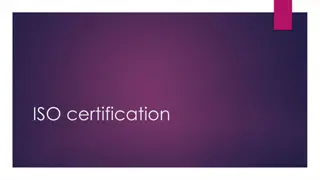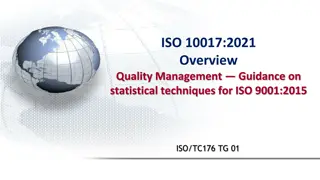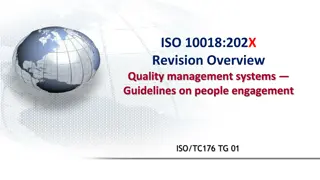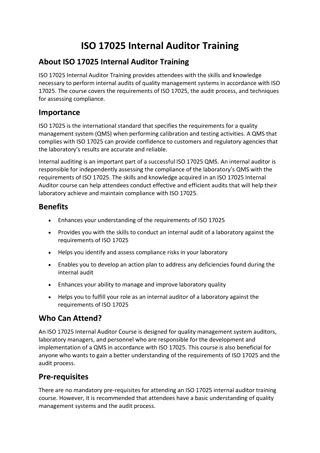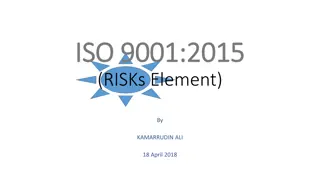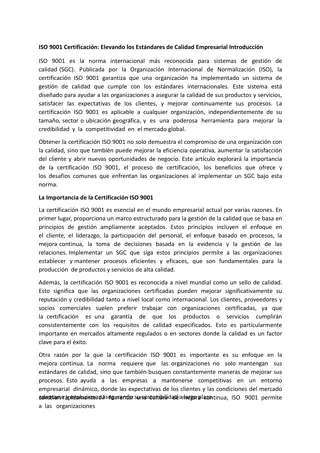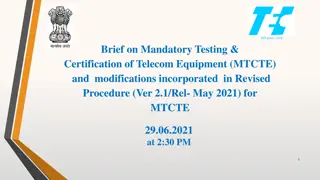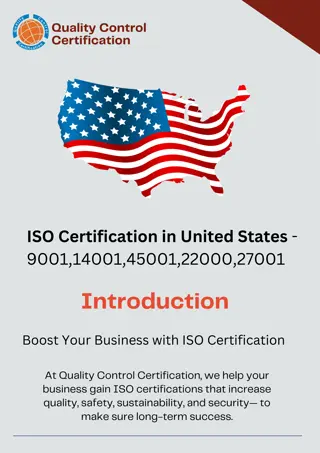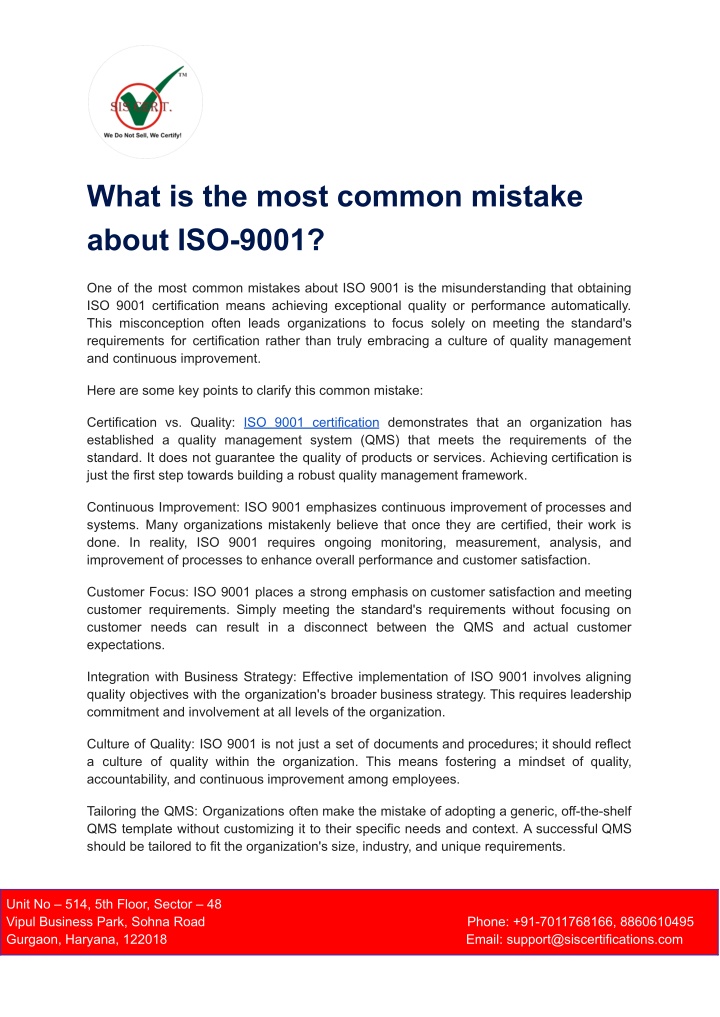
Most common mistake about ISO-9001
mistake about ISO-9001
Download Presentation

Please find below an Image/Link to download the presentation.
The content on the website is provided AS IS for your information and personal use only. It may not be sold, licensed, or shared on other websites without obtaining consent from the author. If you encounter any issues during the download, it is possible that the publisher has removed the file from their server.
You are allowed to download the files provided on this website for personal or commercial use, subject to the condition that they are used lawfully. All files are the property of their respective owners.
The content on the website is provided AS IS for your information and personal use only. It may not be sold, licensed, or shared on other websites without obtaining consent from the author.
E N D
Presentation Transcript
What is the most common mistake about ISO-9001? One of the most common mistakes about ISO 9001 is the misunderstanding that obtaining ISO 9001 certification means achieving exceptional quality or performance automatically. This misconception often leads organizations to focus solely on meeting the standard's requirements for certification rather than truly embracing a culture of quality management and continuous improvement. Here are some key points to clarify this common mistake: Certification vs. Quality: ISO 9001 certification demonstrates that an organization has established a quality management system (QMS) that meets the requirements of the standard. It does not guarantee the quality of products or services. Achieving certification is just the first step towards building a robust quality management framework. Continuous Improvement: ISO 9001 emphasizes continuous improvement of processes and systems. Many organizations mistakenly believe that once they are certified, their work is done. In reality, ISO 9001 requires ongoing monitoring, measurement, analysis, and improvement of processes to enhance overall performance and customer satisfaction. Customer Focus: ISO 9001 places a strong emphasis on customer satisfaction and meeting customer requirements. Simply meeting the standard's requirements without focusing on customer needs can result in a disconnect between the QMS and actual customer expectations. Integration with Business Strategy: Effective implementation of ISO 9001 involves aligning quality objectives with the organization's broader business strategy. This requires leadership commitment and involvement at all levels of the organization. Culture of Quality: ISO 9001 is not just a set of documents and procedures; it should reflect a culture of quality within the organization. This means fostering a mindset of quality, accountability, and continuous improvement among employees. Tailoring the QMS: Organizations often make the mistake of adopting a generic, off-the-shelf QMS template without customizing it to their specific needs and context. A successful QMS should be tailored to fit the organization's size, industry, and unique requirements. Unit No 514, 5th Floor, Sector 48 Vipul Business Park, Sohna Road Gurgaon, Haryana, 122018 Phone: +91-7011768166, 8860610495 Email: support@siscertifications.com
Documentation Overload: Some organizations focus excessively on creating voluminous documentation to meet ISO 9001 requirements, believing that more documentation equates to a better QMS. Instead, the emphasis should be on creating practical, useful documentation that adds value to the organization. To avoid these common mistakes, organizations should view ISO 9001 certification as a strategic tool for improving overall performance and customer satisfaction rather than a checkbox exercise. It requires commitment from top management, engagement from employees, and a genuine effort to embed quality principles into the organization's DNA. Unit No 514, 5th Floor, Sector 48 Vipul Business Park, Sohna Road Gurgaon, Haryana, 122018 Phone: +91-7011768166, 8860610495 Email: support@siscertifications.com


